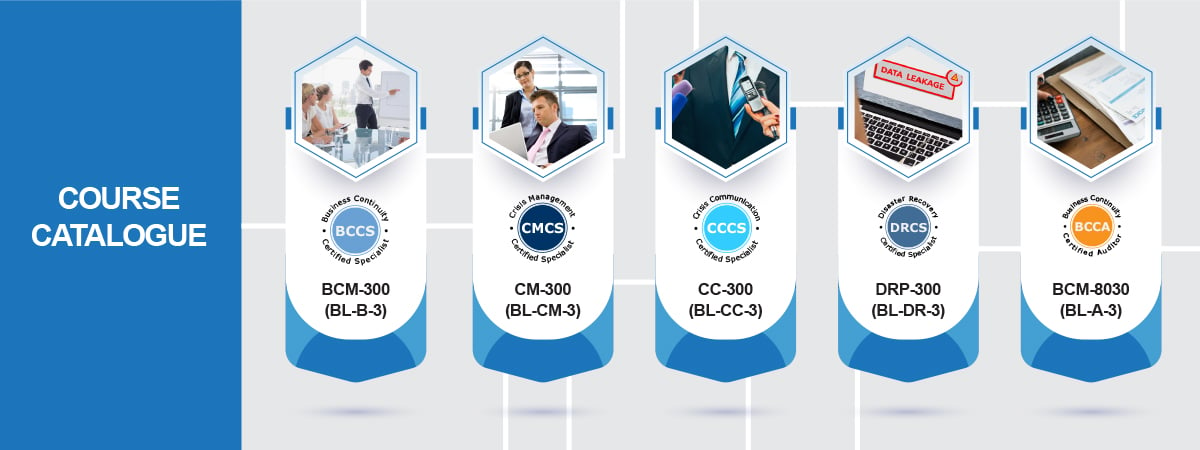Navigating the Storms: Top Trends and Best Practices in Business Continuity Management for 2024
 The world continues to throw curveballs, from cyberattacks and climate disasters to geopolitical unrest and supply chain disruptions.
The world continues to throw curveballs, from cyberattacks and climate disasters to geopolitical unrest and supply chain disruptions.
In this increasingly volatile landscape, robust business continuity management (BCM) is no longer a luxury – it's an essential survival strategy. But what are the key trends shaping BCM in 2024, and how can you ensure your organisation is prepared to weather any storm?
Emerging Trends
Building Resilience, Not Just Recovery
Shifting the focus from reactive recovery to proactive resilience, organisations are moving towards building flexible and adaptable systems that can withstand diverse disruptions.
This means diversifying supplier networks, investing in cloud-based technologies, and fostering a culture of preparedness across all departments.
Embracing Automation and AI
Automation is streamlining BCM processes, from risk identification and scenario planning to incident response and recovery activities.
AI-powered tools analyse vast amounts of data to predict potential disruptions and automate mitigation strategies, enhancing speed and efficiency.
Prioritising Cyber Resilience
With cyberattacks a constant threat, integrating cyber resilience into BCM plans is crucial.
This involves data protection and ensuring critical systems and processes can rapidly withstand and recover from cyberattacks.
Climate Change Preparedness
As climate-related events become more frequent and severe, organisations incorporate climate risk assessments and mitigation strategies into their BCM plans.
This includes preparing for natural disasters, adapting to changing weather patterns, and ensuring sustainability measures.
The Human Factor
Technology plays a vital role, but people ultimately drive successful BCM.
Investing in employee training, communication, and psychological resilience ensures they are prepared to respond effectively during disruptions.
Best BCM Practices for 2024
Conduct Regular Risk Assessments
Don't wait for disaster to strike. Identify potential threats and vulnerabilities proactively.
Test and Refine Your Plan
Don't assume your plan works flawlessly. Regularly test its effectiveness through simulations and exercises.
Embrace a Cross-functional Approach
BCM is not just an IT issue. Involve all departments in planning, testing, and communication.
Stay informed
Keep up with evolving threats and best practices by attending industry events, reading publications, and seeking expert guidance.
Communicate Effectively
Transparent and timely communication with stakeholders is crucial during disruptive events.
Measure and improve
Track BCM performance metrics and continuously use data to enhance your plans and processes.
Consider Industry-specific Challenges
Tailor your BCM plan to address your sector's unique risks and vulnerabilities.
Leverage Technology
Explore innovative solutions like cloud-based disaster recovery, AI-powered analytics, and collaboration tools.
Partner with Experts
Seek guidance from BCM professionals and consultants to build a robust and effective plan.
![[ITL] [1-6] Training-led BCM Implementation: Overview](https://no-cache.hubspot.com/cta/default/3893111/f8e68a33-08ac-4d56-98f2-a8cb0c6fbe5c.png) BCM Institute continues to support all industries globally with a structured training approach.
BCM Institute continues to support all industries globally with a structured training approach.
An alternative to consulting is this training-led implementation. It encompasses updating and implementing your BCM program via training with funding from the governments of Singapore and Malaysia.
Summing Up ...
By embracing these trends and best practices, you can ensure your organization is prepared to navigate the storms of 2024 and beyond.
Remember, BCM is an ongoing journey, not a one-time exercise. Continuously adapt, improve, and build resilience to secure business continuity and success in an ever-changing world.
More Information About BCM Blended/ Hybrid Learning
They are the B-3 Blended/ Hybrid Learning BCM-300 Business Continuity Management Implementer and the B-5 Blended/ Hybrid Learning BCM-5000 Business Continuity Management Expert Implementer.










![Register [BL-B-3]*](https://no-cache.hubspot.com/cta/default/3893111/ac6cf073-4cdd-4541-91ed-889f731d5076.png)



![FAQ [BL-B-3]](https://no-cache.hubspot.com/cta/default/3893111/b3824ba1-7aa1-4eb6-bef8-94f57121c5ae.png)
![Email to Sales Team [BCM Institute]](https://no-cache.hubspot.com/cta/default/3893111/3c53daeb-2836-4843-b0e0-645baee2ab9e.png)



